Smooth, slippery and heavenly soft, Chinese steamed eggs requires minimum ingredients yet delivers a delicate look and flavour. Learn how to make it flawlessly.
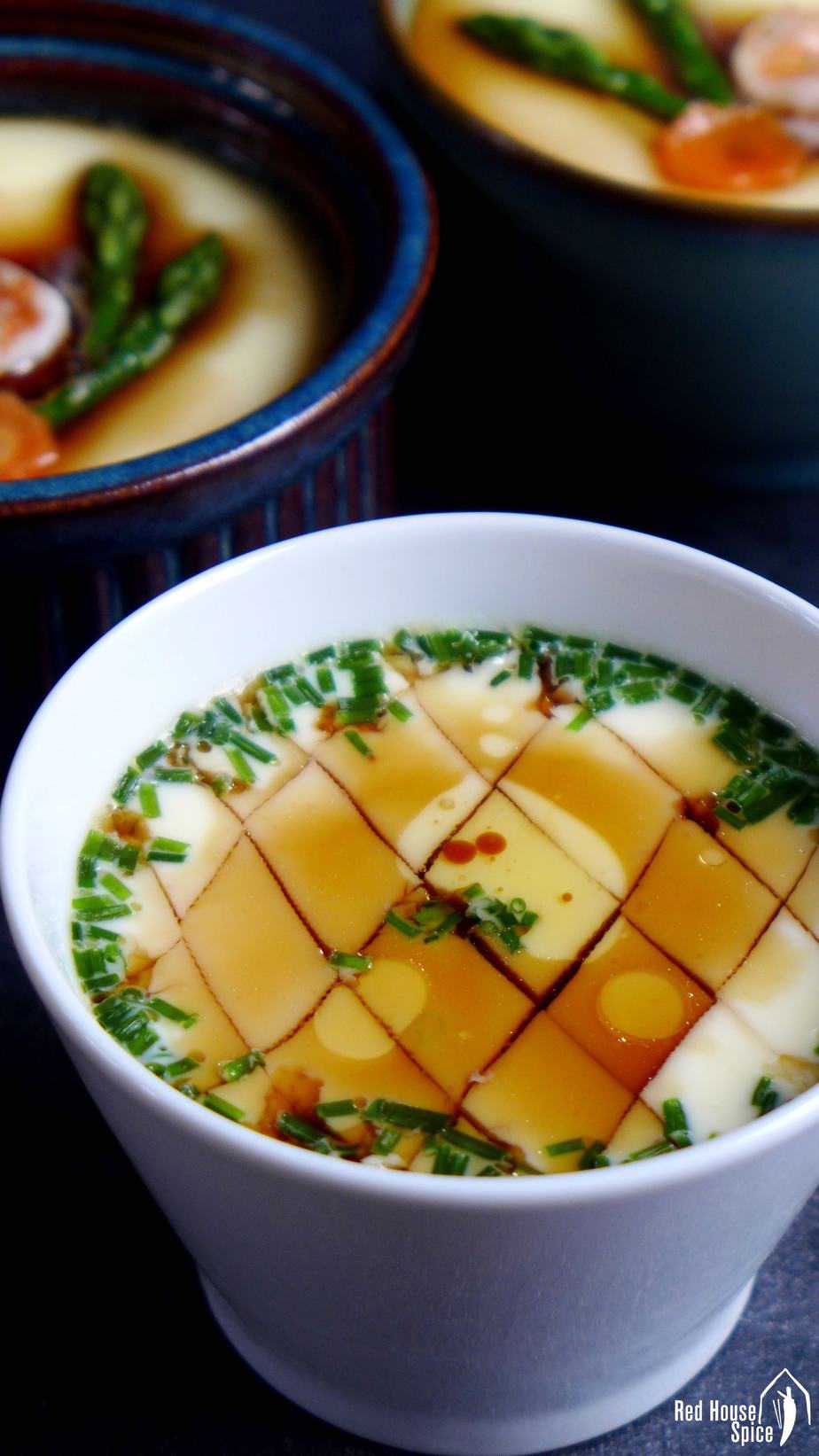
Jump to:
What are steamed eggs
I’m very lucky to have had a childhood full of sweet memories and many of them are food-related. My family didn’t have any sophisticated ingredients but every single dish my mum & dad prepared was so satisfying and delicious.
Today, I’m sharing a super simple dish that always reminds me of my dear mum (now it has become my own children’s favourite dish): Chinese steamed eggs (蒸蛋羹), also know as water egg or egg custard.
It couldn’t be simpler to make Chinese steamed eggs: beat the eggs, add water then steam. Voilà, all done! However, it does require a bit of attention to detail to achieve the perfect texture: smooth, slippery and heavenly soft.
I consider myself a perfectionist especially when it comes to cooking, so I’d love to share my tricks on how to produce a bowl of flawless Chinese steamed eggs.
The perfect egg water ratio
The ideal egg water ratio should be around 1:2 in volume. Too much egg will result in a hard curd, whereas too much water will make it impossible to turn the mixture into a solid form.
For example, I normally use medium-sized eggs which measure about 50ml each. So I add 100ml of water. If you wish, replace water with chicken stock for a fuller taste.
The ideal water temperature
Warm water works best for Chinese steamed eggs. The right temperature helps the beaten egg and the water to combine. I would suggest around 45°C (113°F). But don’t rush to buy a thermometer! I have a simple trick: boil some water, then pour it into the same amount of tap water.
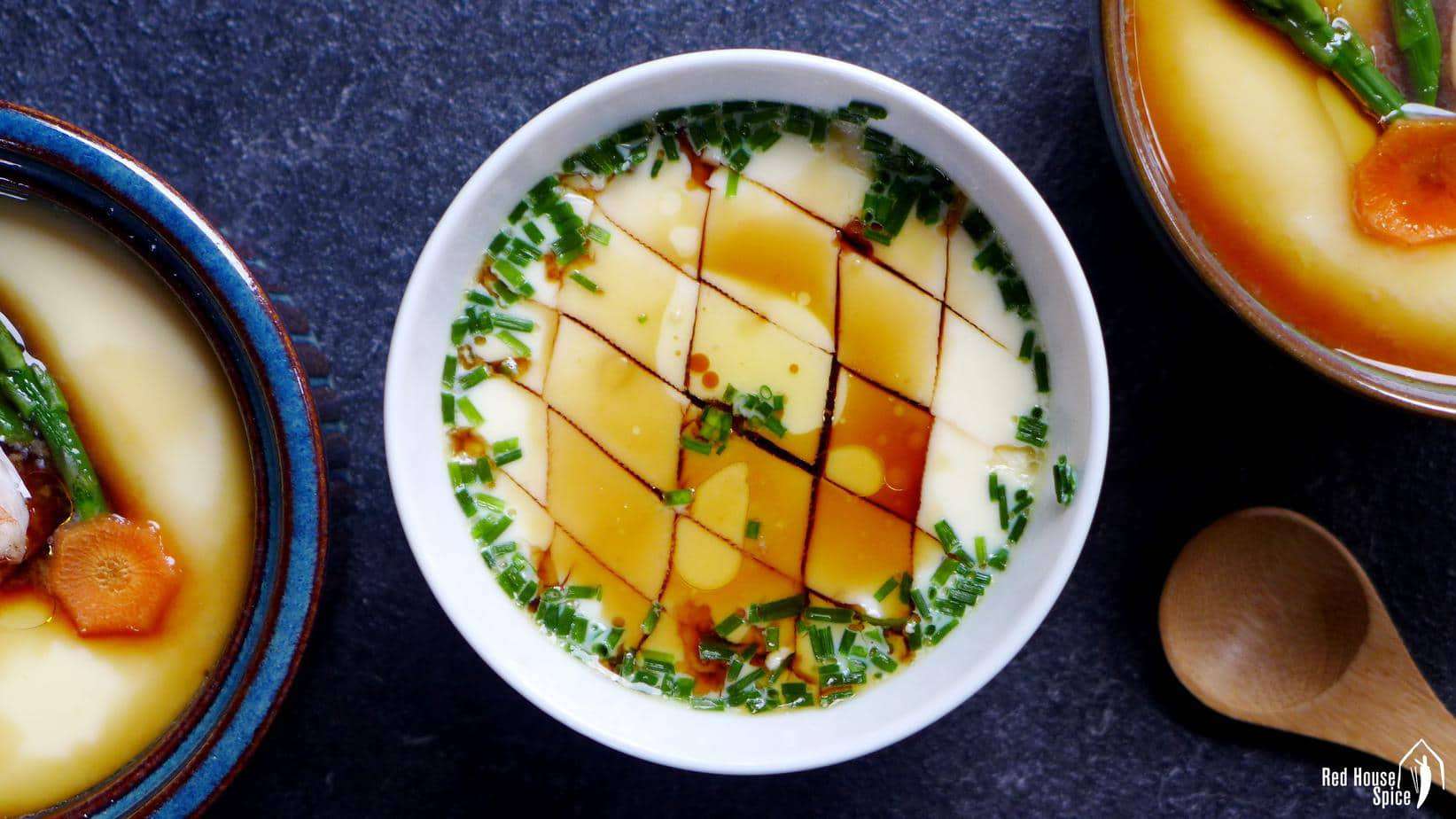
Avoid lumps and bubbles
In order to make the steamed egg super smooth, you need to remove any lumps and bubbles in the egg water mixture prior to steaming. If possible, use a sieve to filter when pouring the mixture into steaming bowl(s).
Steamer set-ups
When it comes to steaming, I’ve got two options for you:
- Use a regular steamer if you have one;
- Use an ordinary pot that is wide enough to place your bowl(s). Sit the bowls directly in the boiling water. Make sure the water level is right: low enough not to splash into the egg bowl and high enough to complete 10 minutes steaming without drying out the pot.
Avoid dripping water
Unless using a traditional bamboo steamer which allows the steam to escape from the lid, I suggest you cover the bowls with cling film (pierce a couple of times). This is to prevent the condensation on the lid from dripping onto the smooth surface of the egg curd. See the image above: the bowl on the left wasn’t covered by cling film thus has an uneven surface.
Seasoning: less is more
Chinese steamed eggs doesn’t need sophisticated seasoning to impress your palate. Exactly like how my mum serves this dish, I only add a little light soy sauce and sesame oil, then cut through the curd several times to let the sauce penetrate. Simply delicious!
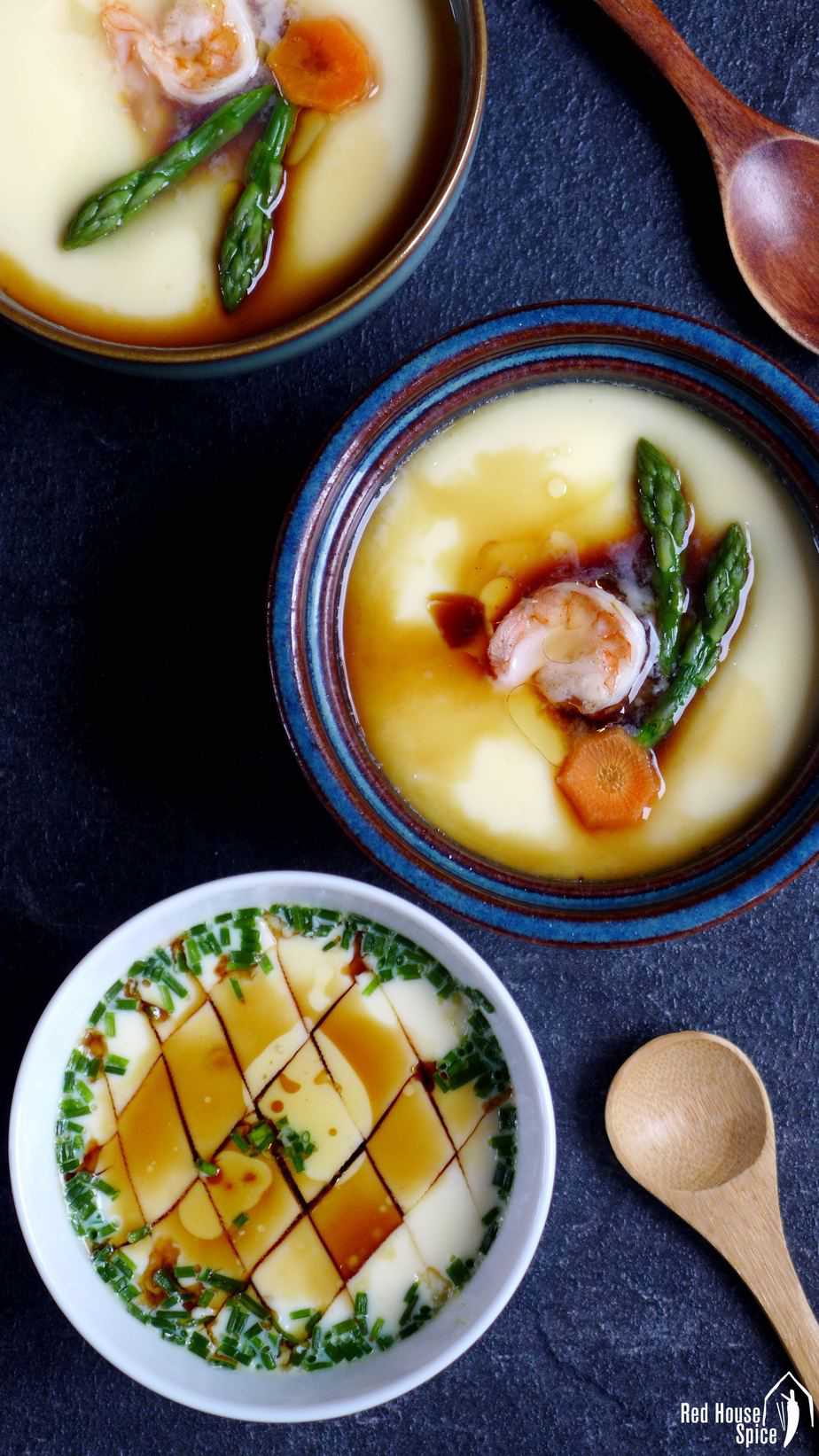
Optional garnish
Sometimes, I garnish the steamed eggs with prawns and vegetables like asparagus, carrot, etc. In this case, you need to steam the eggs as usual for 7 minutes, then place in the garnish and steam for a further 3 minutes.
📋 Recipe
Love this recipe? Please leave a 5-star 🌟🌟🌟🌟🌟 rating in the recipe card below & if you REALLY like it, consider leaving a comment as well!
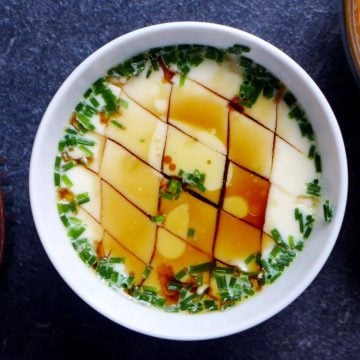
Chinese steamed eggs (蒸蛋羹)
Ingredients
- 2 eggs - beaten
- Warm water - double volume of the beaten eggs (see note 1 & 2)
- 1 pinch salt
- 1 teaspoon chive - finely chopped (optional)
- 2 teaspoon light soy sauce
- 2 drop sesame oil
Extra garnish (optional)
- Prawns - peeled and deveined
- Asparagus & carrot
Instructions
- Pour warm water into the beaten eggs. Add salt then stir well.
- Through a sieve, pour the mixture into 2 small serving bowls. Sprinkle chive over if using.
- Cover the bowls with cling film. Pierce to allow the steam to escape.
- Steam for 10-12 minutes over a gentle heat (place the bowls in when the water starts to boil).
- If using extra garnish: Steam the egg as usual for 7 minutes, then place in prawns and vegetables. Steam for a further 3 minutes.
NOTES
NUTRITION
NUTRITION DISCLOSURE: Nutritional information on this website is provided as a courtesy to readers. It should be considered estimates. Please use your own brand nutritional values or your preferred nutrition calculator to double check against our estimates.
Hope you find this “perfectionist’s guide” useful. Check out other scrumptious recipes using eggs as the main ingredient: Marbled tea eggs, Egg fried rice noodles, Tomato & egg stir fry.


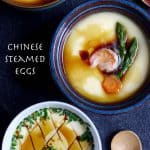
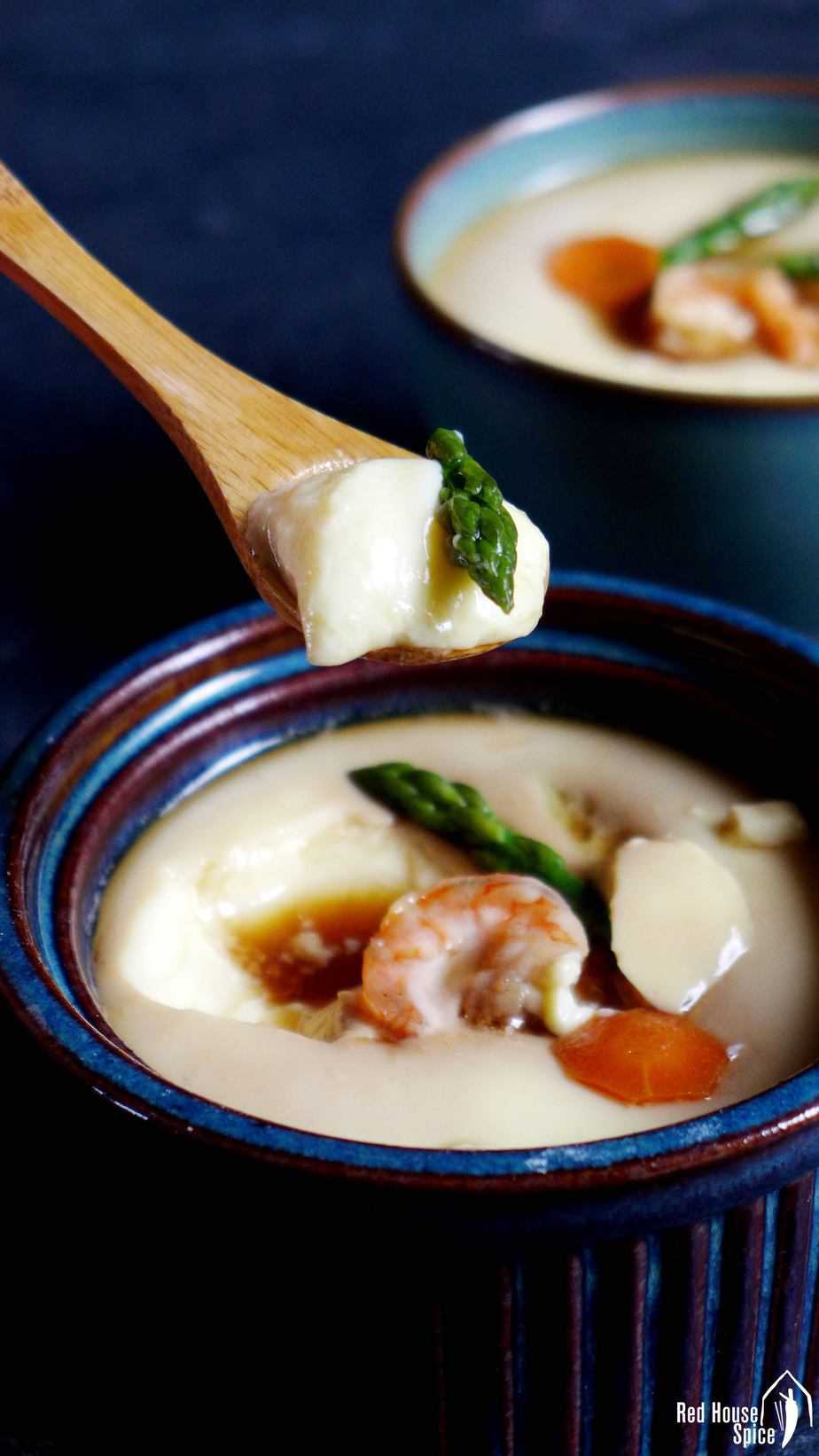
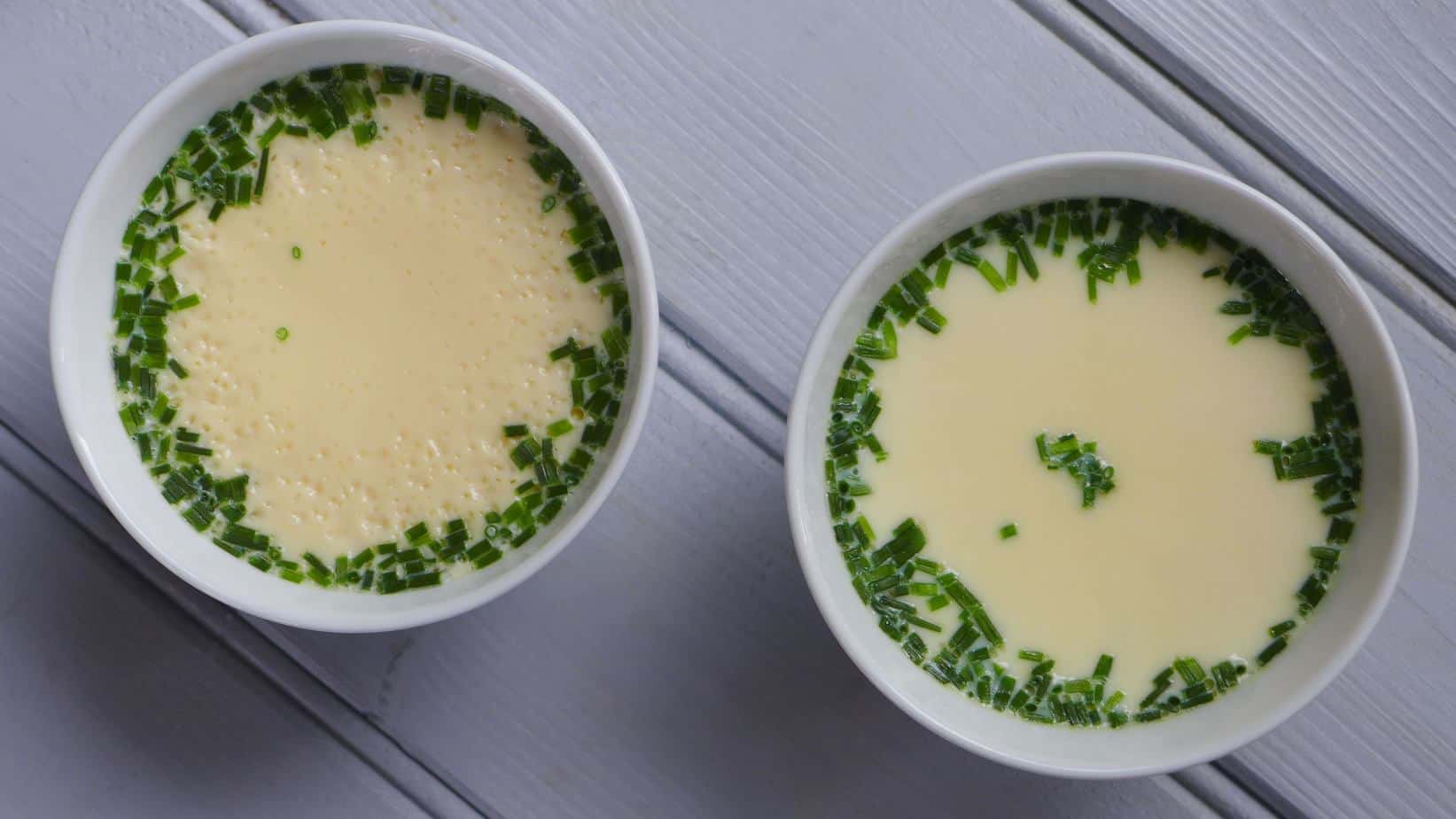
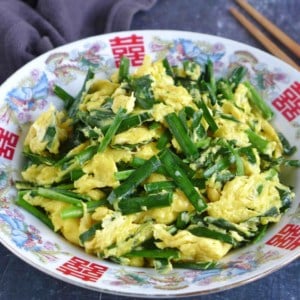
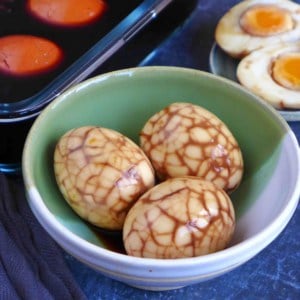
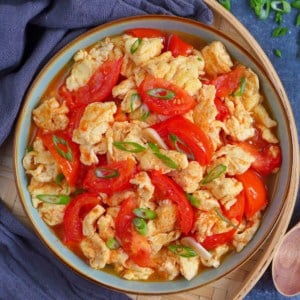
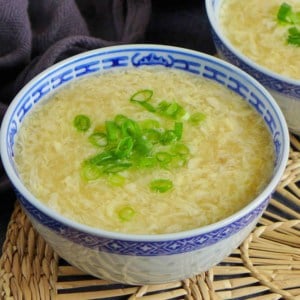
I so love the simplicity of this dish.
Wei, you said to add any topping we like.
Can this be a sweet?
As in the traditional western custard or creme brulee.
I haven’t seen a sweet version of steamed eggs in China. But why not! Please feel free to improvise and let me know how it goes.
Easy & tasty. I just used one bowl since I’m eating by myself. 2nd time around, I forgot the plastic wrap and it came out fine. Thanks for the recipe!
My pleasure to share Jade! Glad you enjoyed my recipe.
I’ve already commented on how much I loved this recipe. Now I’ve got question for Wei that might help others.
For years I used Sichuan peppercorns I had in my pantry. After I discovered your website and started making your recipes, I paid more attention to this important ingredient. I noticed my peppercorns looked and smelled dead. I did some research and ordered high quality Sichuan peppercorns online (Premium Szechuan Peppercorns, Soeos). When I compared them to the old peppercorns, the difference was huge. The new peppercorns looked, smelled and tasted much better.
Is it important to use high quality fresh Sichuan peppercorns to have this dish come out great? Thank you.
Hi Deems! It seems your Sichuan pepper question is related to another recipe (Not steamed eggs). You’re right that Sichuan pepper tends to lose its flavor and numbing effect over time. High-quality ones that haven’t been on the shelf too long always taste much better. My guide to Sichuan pepper offers some purchasing tips.